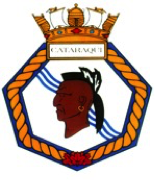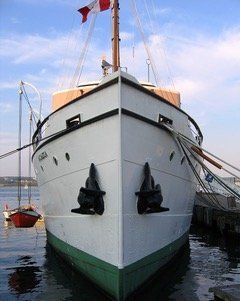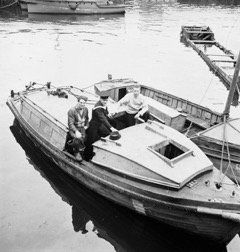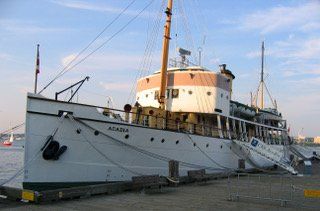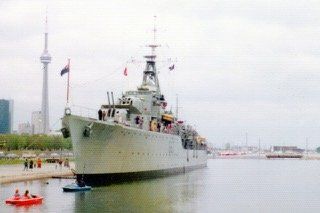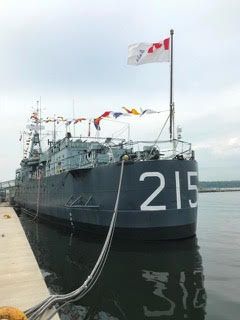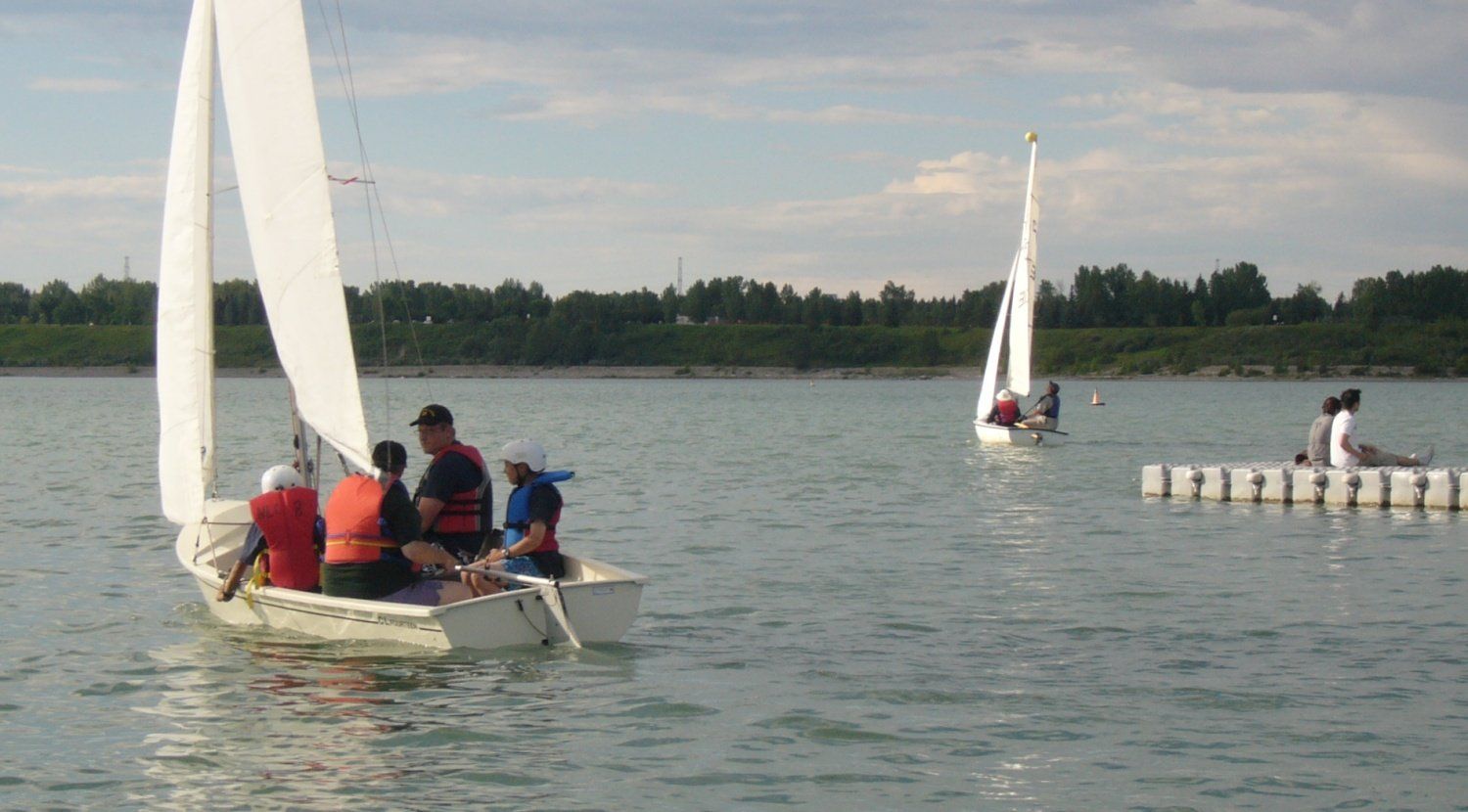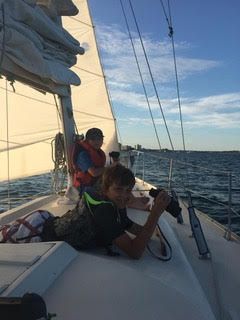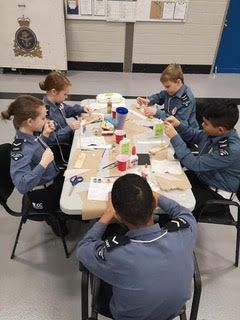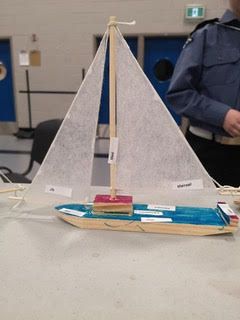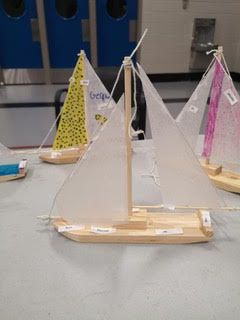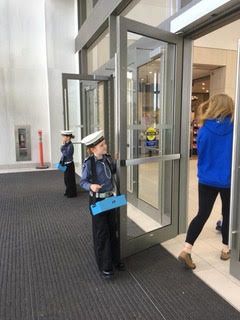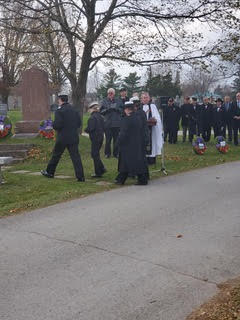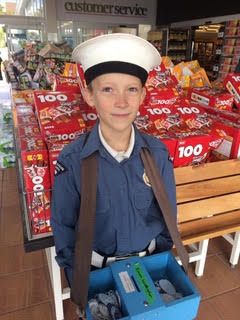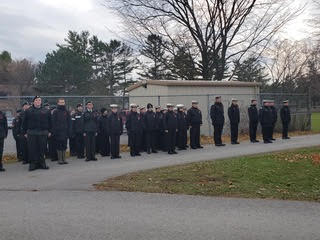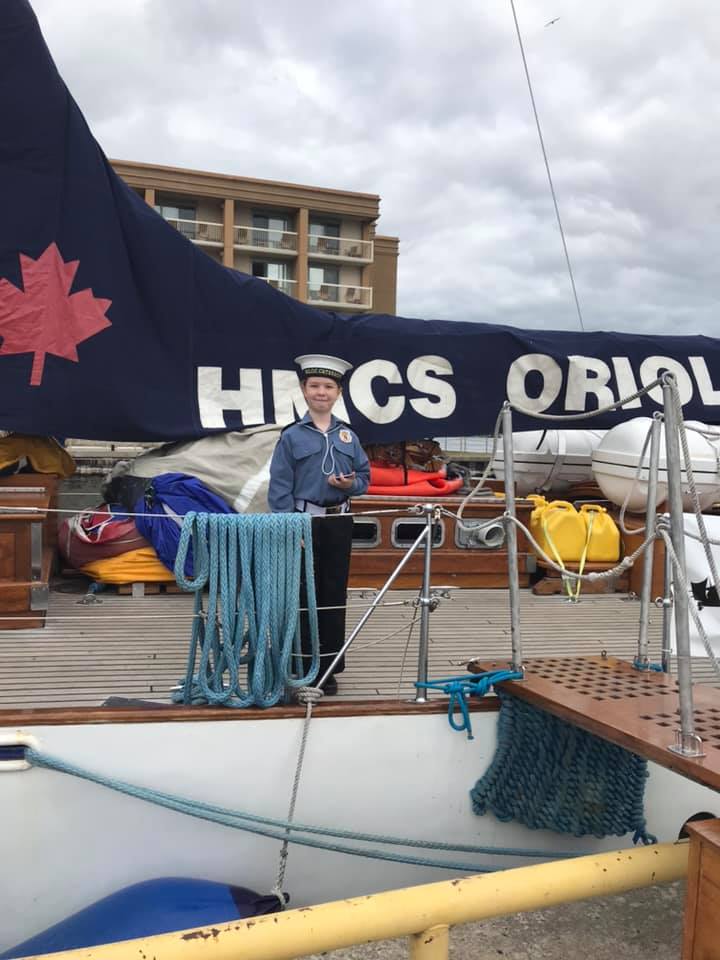MCS Haida is a Tribal-class destroyer that served in the Royal Canadian Navy (RCN) from 1943 to
1963, participating in World War II and the Korean War. She was named for the Haida people.
The only surviving Tribal-class destroyer out of 27 vessels constructed for the RCN, the Royal Navy,
and the Royal Australian Navy between 1937 and 1945, Haida sank more enemy surface tonnage
than any other Canadian warship and as such is commonly referred to as the "Fightingest Ship in
the Royal Canadian Navy" [
Designated a National Historic Site of Canada in 1984, she now serves as a museum ship berthed
next to HMCS Star, an active Royal Canadian Naval Reserve Division, in Hamilton, Ontario. In
2018, Haida was designated the ceremonial flagship of the RCN.
FUN FACTS for HAIDA Division
The Tribals were designed to fight heavily armed destroyers of other navies, such as the
Japanese Fubuki class . [5] Canada chose the design based on its armament, with the size and power
of the Tribal class allowing them to act more like small cruisers than as fleet destroyers. [6] Haida was
among the first batch of Tribal-class destroyers ordered by the RCN in 1940–1941. They were
ordered with modified ventilation and heating systems for North Atlantic winter service. Haida's
design was modified after deficiencies were noted in the lead ship of the Canadian
Tribals, HMCS Iroquois.
Haida, as one of the British-built Tribal-class destroyers, was 335 feet 6 inches (102.26 m) long
between perpendiculars and 377 feet (115 m) long overall with a beam of 36 feet 6 inches (11.13 m)
and a draught of 13 feet (4.0 m). As built, the destroyer displaced 1,927 long tons (1,958 t) standard
and 2,745 long tons (2,789 t) at deep load. Haida had a complement of 14 officers and 245 ratings.
Haida moored at Pier 9 in Hamilton
Initially the city of Toronto had planned to build a "Serviceman's Memorial Park" near the
Princess' Gates at nearby Exhibition Place to link with the Haida preservation efforts.
In 1970, Haida was moved to Ontario Place at the west end of the Toronto waterfront, where it was
turned into an attraction until 2002. The vessel was also used as a Royal Canadian Sea
Cadets training facility.
HMCS Haida National Historic Site
Haida's propellers on display at the historic site
In 2002, at the urging of Hamilton, Ontario MP Sheila Copps, Parks Canada purchased Haida from
the provincial government and towed her (with great difficulty) from her Ontario Place dock to a
shipyard at Port Weller for a $5 million refit to her hull. She was taken to a new home on the
Hamilton waterfront and arrived to an 11-gun salute from 31 Royal Canadian Sea Cadet
Corps Lion and her 12-pounder naval field gun on 30 August 2003, the 60th anniversary of her
commissioning into the RCN. The destroyer is now a National Historic Site and is a museum ship on
the Hamilton waterfront in front of Hamilton's Naval Reserve Division, HMCS Star.
In July 2006 Haida was "twinned" with the Polish destroyer ORP Błyskawica in a ceremony in
Gdynia, Poland. Both ships served in the 10th Destroyer Flotilla during the Second World War. The
ceremony was attended by former crew members of both ships and the general public. The ship was
visited in 2009 by Prince Charles, Prince of Wales, and his wife, Camilla, Duchess of Cornwall, and,
on June 29, 2010, at Government House in Nova Scotia, Prince Philip, Duke of Edinburgh,
presented to representatives of HMCS Haida the World Ship Trust Certificate. In September 2016,
the ship was towed to Heddle Marine to undergo repairs and upgrades. The repairs took until
December 2016 to complete. In February 2018, Haida was designated the ceremonial flagship of the
Canadian Navy, now marked by the hois.

